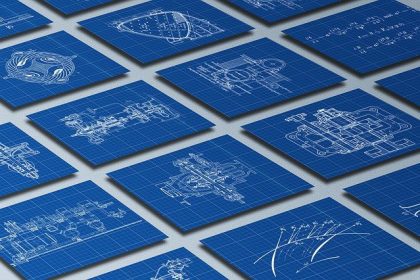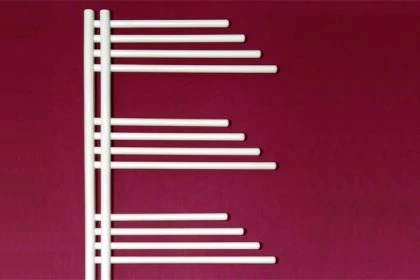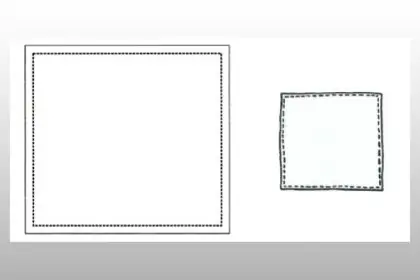Not always obvious, but nevertheless a fact: 3D printing may infringe the IP rights of others. Our article gives an overview of the legal situation in design law as well as copyright with regard to 3D printing.

3D printing is adaptable and versatile and is used in a wide range of industries. These include not only medical and mechanical engineering, but increasingly also the consumer goods industry and even the food industry. Additive manufacturing (AM), known as 3D printing, is moving into all areas of the economy where large-scale series production is not worthwhile – or where an individual product is desired.
Not surprisingly, the number of patent applications in this area at the European Patent Office (EPO) has risen by an average of 36% per year in the years 2015 to 2018 alone. 3D printing already an integral part of the economy.
In a two-part article, we therefore summarize the legal situation regarding patent and design rights as well as copyright/copyright in relation to 3D printing. What is not obvious is that 3D printing can, under certain circumstances, infringe the IP rights of others.
We have already explained the patent law in relation to 3D printing in part 1 of our short series of articles, please read on HERE. In this article now we will turn to design law and also to copyright law. In addition, competition law can also be infringed if construction parts are copied. But one after the other:
3D printing and design rights
Products or spare parts that are protected as registered designs may not be manufactured on a 3D printer, this is not allowed. De facto, such a “reprint” can therefore be warned with a request to cease and desist and, if necessary, claims for damages.
The same applies if, for example, an actuating mechanism is reprinted in 3D printing as a spare part, thus restoring a device that has actually already been discarded, “bringing it to life” so to speak, but this device is protected as a design. Because what seems to be a good thing here, especially in terms of sustainability, is legally considered a so-called new production. And only the owner of the protected design is allowed to do this, even if the device was actually unable to function without the actuating mechanism.
Does that also apply to a non-registered EU design? The short and precise answer: Yes! Because as soon as a design has been made public in the EU, an unregistered industrial property right for this design – more precisely for its surface – is protected as an Union design (UKUDR) for a period of 3 years.
3D Printing and Copyright / Copyright
Even more restrictive and important is the copyright, which must be observed immediately if a construction part also contains a design component. Since the Birthday Train Decision of the Federal Court of Justice (I ZR 143/12), actual objects of daily use can be protected relatively easily under copyright law. Design protection and copyright protection are cumulative, so both types of protection can be claimed for the same object at the same time. This changes the duration of protection enormously. Copyright protection regularly applies for up to 70 years after the death of the respective author, but the term of protection for a registered design ends after 25 years at the latest.
Today, even a vacuum cleaner and a toaster correspond to a certain design, and the modern automotive industry is also very concerned about the special design, e.g. of hoods and dashboards. So before a particular design part is commercially produced in 3D printing, it must first be ensured that this part is neither under design protection nor under copyright protection, if one does not want to be guilty of IP infringement.
3D printing and competition law
If you think about the automotive industry, it is easy to see how 3D printing can also violate competition laws. The important keyword here is “repair clause” – it applies to all components IF the repair serves to restore the original appearance. The repair clause is firmly anchored in European property law (by Art. 110 of EU Regulation No. 6/2002), in Germany it will be introduced shortly, but with restrictions – we reported.
In practice, this means that specially designed car rims or fittings as well as the covers of game consoles violate the competition rights of the actual owners of the property rights, if a so-called deception of origin exists. Under no circumstances should a consumer assume that the 3D print is an original part, not even as a “limited edition” or “common variants” of the original parts. The European Court has already defined relatively precisely the criteria according to which such parts may be reproduced at all and how they are to be labelled. Please feel free to contact us if you are unsure.
3 D printing for private use is allowed
Let us be clear once again: all these legal restrictions on 3D printing apply only to commercial 3D printing. In private use, protected individual parts may also be reprinted. The clear demarcation – what is still private, where does it start commercially – is not always easy in individual cases, but there is a guideline: What is relevant is whether 3D printing of a protected product actually creates a demand for this product. By the way, exhibiting products at trade fairs already works in this sense.
The CAD file is also particularly relevant in this context.
CAD file and 3D print
Even the distribution of a CAD file can constitute an indirect infringement. The upload of a CAD file is already an offer to the supply to see, in each case one leaves thereby the private area. The simultaneous forwarding to one or more recipients is evaluated thereby as supply.
A download of a CAD file from the Internet, for example from an online platform, is again only a preparatory measure for the reproduction of the product and as such is not an infringement of property rights.
Would you also like to protect and defend your product or design?
Our attorneys have many years of expertise in design, trademark and patent law as well as in the entire field of intellectual property and are authorized to represent you in any court – in Germany and internationally.
Please contact us if you are interested.
Sources:
Law for Designs, Patents and Copyright
Image:








Leave a Reply